Shuo-Fei Wang
Secondary complementary balancing compressive imaging with a free-space balanced amplified photodetector
Mar 18, 2022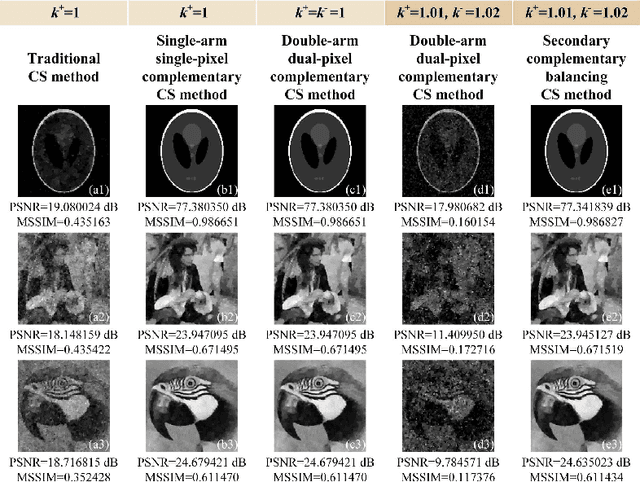

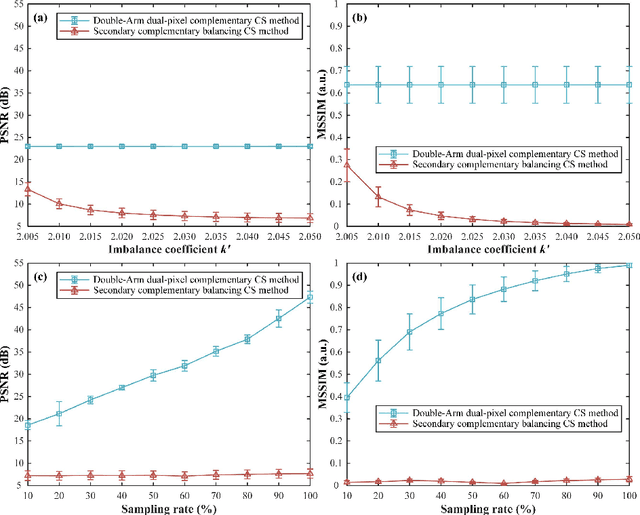

Abstract:Single-pixel imaging (SPI) has attracted widespread attention because it generally uses a non-pixelated photodetector and a digital micromirror device (DMD) to acquire the object image. Since the modulated patterns seen from two reflection directions of the DMD are naturally complementary, one can apply complementary balanced measurements to greatly improve the measurement signal-to-noise ratio and reconstruction quality. However, the balance between two reflection arms significantly determines the quality of differential measurements. In this work, we propose and demonstrate a simple secondary complementary balancing mechanism to minimize the impact of the imbalance on the imaging system. In our SPI setup, we used a silicon free-space balanced amplified photodetector with 5 mm active diameter which could directly output the difference between two optical input signals in two reflection arms. Both simulation and experimental results have demonstrated that the use of secondary complementary balancing can result in a better cancellation of direct current components of measurements and a better image restoration quality.
Single-pixel imaging based on weight sort of the Hadamard basis
Mar 09, 2022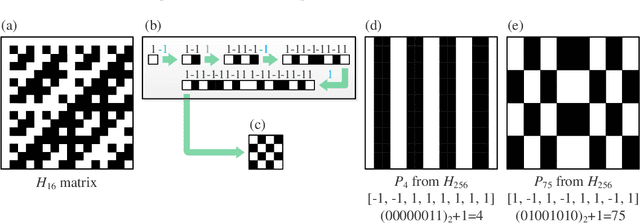
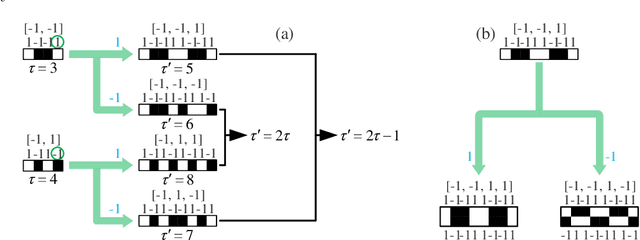
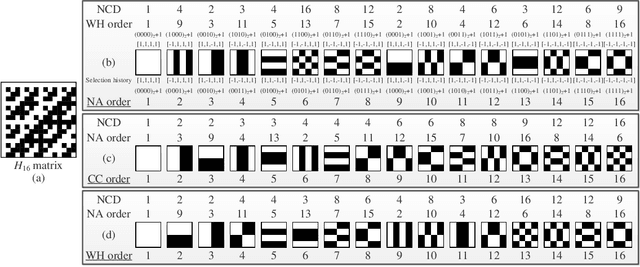
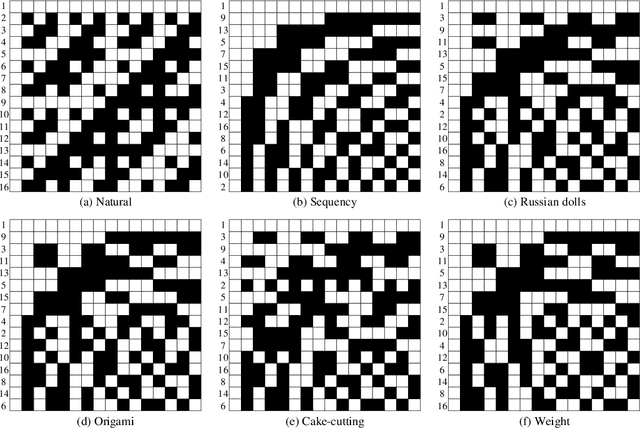
Abstract:Single-pixel imaging (SPI) is very popular in subsampling applications, but the random measurement matrices it typically uses will lead to measurement blindness as well as difficulties in calculation and storage, and will also limit the further reduction in sampling rate. The deterministic Hadamard basis has become an alternative choice due to its orthogonality and structural characteristics. There is evidence that sorting the Hadamard basis is beneficial to further reduce the sampling rate, thus many orderings have emerged, but their relations remain unclear and lack a unified theory. Given this, here we specially propose a concept named selection history, which can record the Hadamard spatial folding process, and build a model based on it to reveal the formation mechanisms of different orderings and to deduce the mutual conversion relationship among them. Then, a weight ordering of the Hadamard basis is proposed. Both numerical simulation and experimental results have demonstrated that with this weight sort technique, the sampling rate, reconstruction time and matrix memory consumption are greatly reduced in comparison to traditional sorting methods. Therefore, we believe that this method may pave the way for real-time single-pixel imaging.
Multi-wavelet residual dense convolutional neural network for image denoising
Feb 19, 2020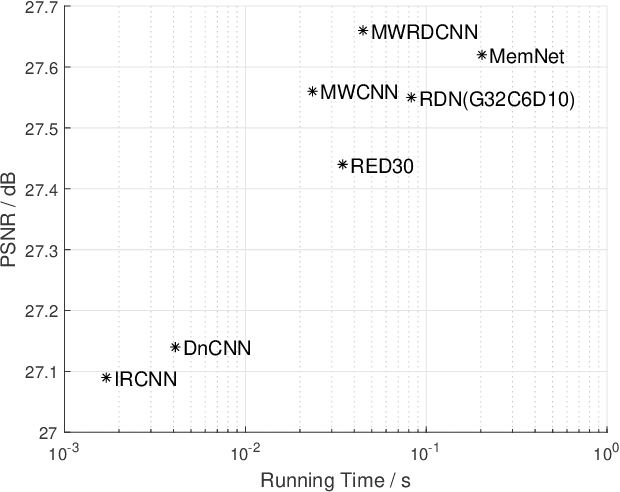



Abstract:Networks with large receptive field (RF) have shown advanced fitting ability in recent years. In this work, we utilize the short-term residual learning method to improve the performance and robustness of networks for image denoising tasks. Here, we choose a multi-wavelet convolutional neural network (MWCNN), one of the state-of-art networks with large RF, as the backbone, and insert residual dense blocks (RDBs) in its each layer. We call this scheme multi-wavelet residual dense convolutional neural network (MWRDCNN). Compared with other RDB-based networks, it can extract more features of the object from adjacent layers, preserve the large RF, and boost the computing efficiency. Meanwhile, this approach also provides a possibility of absorbing advantages of multiple architectures in a single network without conflicts. The performance of the proposed method has been demonstrated in extensive experiments with a comparison with existing techniques.
 Add to Chrome
Add to Chrome Add to Firefox
Add to Firefox Add to Edge
Add to Edge